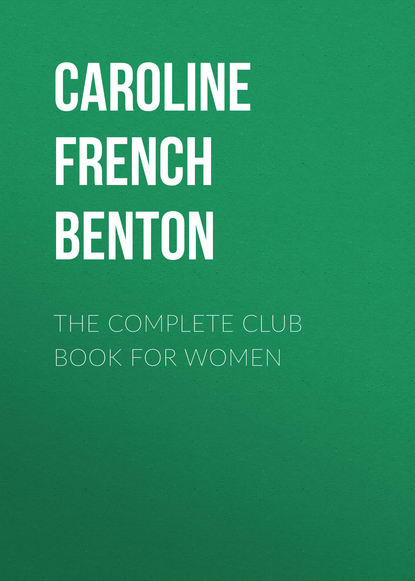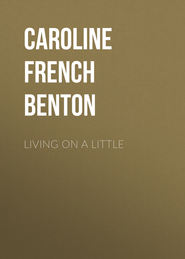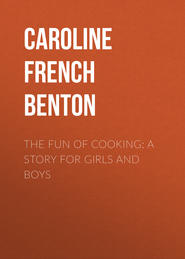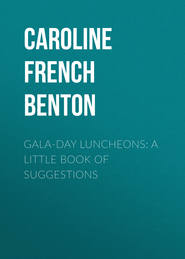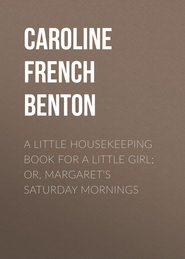По всем вопросам обращайтесь на: info@litportal.ru
(©) 2003-2024.
✖
The Complete Club Book for Women
Настройки чтения
Размер шрифта
Высота строк
Поля
Discuss the topic: What did the Dutch settlers give to the American people? Compare them with the Southern and New England colonists, showing that they gave substantial virtues but lacked the love of beauty shown by the Virginians and the idealism of the Puritans. Read "The Dutchman's Fireside," by J. K. Paulding (Scribner), "Free to Serve," by Emma Rayner (The Page Company), "The Begum's Daughter," by E. L. Bynner (Houghton Mifflin Co.), and "The Bow of Orange Ribbon," by Amelia E. Barr (Dodd, Mead & Co.).
VII – NEW JERSEY AND DELAWARE
The early history of New Jersey is closely connected with that of New Amsterdam. It was settled by the Dutch; after the coming of the English, however, the land was given by the Crown to the Carterets, and as they were from the Island of Jersey French settlers came over with them. The Dutch, a handful of Puritans, and some Swedes who had settled inland, soon began to quarrel among themselves.
Major Edmund Andros, the governor of New York, jealous of the growing power of his neighbors, kidnapped the governor of New Jersey and made him a prisoner. Read the story of his trial and return. Turn next to that part of Jersey on the edge of Delaware and notice how it was bought and settled by Quakers. Have a sketch of Fenwick, the pioneer, and of the coming of new colonists, the influence of Penn on the government, and how the two parts of Jersey were taken under the Crown and governors sent from England, who ruled with uncertain success. Note the founding of Princeton College later, and the growth of the colony in prosperity.
Delaware was coveted by three nations: the Dutch claimed it, the Swedes acquired it, and the English were given it. One paper may tell of Minuit and his rule, and another take up the invasion of Peter Stuyvesant, the fall of the fort, and the surrender of the Swedes. Then came ten years of Dutch rule, which is an interesting chapter of history, for the colony came into collision with Maryland. From this point on there is constant bickering and struggle until the coming of the English. Read of Lovelace and his famous house, and the story of Jacobson and how, later, the English almost effaced the Dutch in Delaware, changing even the names of the towns to English. Read "In Castle and Colony," by Emma Rayner (Stone, Chicago).
VIII – PENNSYLVANIA
The story of the settlement of Pennsylvania by William Penn and his Quaker friends is familiar to every one. Aided by money given by the King and welcomed by the Dutch, who had many settlements, he established himself on fifty thousand acres of land, and sent word to those in England to come to him. The Assembly soon met, and the remarkable document known as the Great Law of Pennsylvania was drawn up; clubs should read the substance of this.
The Mennonites, a religious sect from Germany, soon settled in the colony and greatly influenced its future, as did the Germans who came later from the Palatinate, an industrious, frugal people, who printed the first Bible in America and first protested against slavery. Read from "The Germans in Colonial Times," by Lucy F. Bittinger (Lippincott).
CHAPTER IV
Some Poets of To-day
Our day is a time when more good verse is being written than ever before, much of it in our own country. The yearly output in English alone is enormous, and much of it is so strong, so original, that club women should certainly familiarize themselves with it.
To study the subject intelligently there may be a preliminary course on modern poetry and its criticism, using these books, in part or whole: "Studies in Poetry and Criticism," by Arthur Symons (Bell), "An Introduction to Poetry," by R. M. Alden (Henry Holt & Co.), "The Enjoyment of Poetry," by Max Eastman (Scribner), and "Lectures on Poetry," by A. C. Bradley (Macmillan).
As the modern poets are studied, have plenty of illustrative readings from the works of each one. Selections will be found in "Poets of the Younger Generation," by William Archer (John Lane Co.), and two volumes edited by Jessie Belle Rittenhouse, "The Younger American Poets" (Little, Brown & Co.) and "The Little Book of Modern Verse" (Houghton Mifflin). Also "The Lyric Year," edited by Ferdinand Earle (Mitchell Kennerley), will be found helpful. There are three magazines which constantly present the best new work of our poets, Poet Lore, Poetry, and The Poetry Journal.
It is of course extremely difficult to classify the writings of poets, because few devote themselves to one style of verse alone. The writer of dramatic poetry will sometimes write lyrics, and the author of philosophical verse will write poems about nature. But for this study the principal work of each poet has been selected, with references to what else has been done by him.
I – INTRODUCTORY
Before beginning with the regular program for the year clubs should devote one or two meetings, as has been suggested, to the study of poetry as a whole. Then there should follow two more on the history of poetry, showing that all early national expression takes this form; illustrate with readings from the Vedic Hymns (translated in Warner's "Library of the World's Best Literature"), and the "Song of Miriam" from the Hebrew, in the Bible. Have papers on the great epics, also, with readings from the "Iliad," the "Odyssey," the "Æneid," the "Nibelungenlied," the "Divine Comedy," the Arthurian cycle and "Paradise Lost."
Turning then to the poetry of to-day, notice that its spirit is something quite new. It is individual. It aims at truth and realism. In much of it there is a great moral purpose – the passion for justice.
The form of modern poetry is also largely new. Rhymed monologues, long narratives, and especially dramatic poems are frequent. Read to illustrate this, "The New Poetry," by James Oppenheim, in Volume 22 of Poet Lore.
Following this, take up in several meetings the topic of dramatic poetry.
II – DRAMATIC POETRY
An early meeting should study the comparison of poetry and prose in plays, and the question, Is poetry acceptable on the stage? What are its limitations? There should also be a paper on the versified plays of to-day as contrasted with those of two centuries ago. Following these may be a study of several dramatic poets of to-day.
Percy Mackaye has some strong work: "Fenris the Wolf," "Jeanne d'Arc," "The Canterbury Pilgrims," and "The Scarecrow" are all worth reading. Present selections from each. Stephen Phillips, an Englishman, has some splendid, vital dramas. His best is "Paolo and Francesca," but both "Herod" and "Ulysses" are to be studied. Read from all three. His experience as an actor has made his plays especially suited to the stage.
Richard Hovey has chosen the Arthurian cycle as his inspiration, and presents the mediæval spirit with unusual faithfulness; he keeps nearer to Mallory than Tennyson did. Read "The Quest of Merlin," and "The Marriage of Guenever."
Among women poets Sara King Wiley has two dramatic poems of note, "Alcestis," and "The Coming of Philibert." Josephine Preston Peabody (Mrs. Marks) took the Shakespearean prize for "The Piper," which was performed at Stratford. Lately she has written another drama, "The Singing Man," full of beauty. Read from this, and also from her short poems.
III – POEMS WITH CLASSICAL AND ROMANTIC THEMES
Among the poets of the last generation Keats, Shelley, Browning and Swinburne chose classical themes, and Byron and Tennyson took romantic. Have a paper pointing out this fact. Read from their poems and compare them with those of the poets of the younger set who took the same themes.
Laurence Binyon, an Englishman like Phillips, has written "Persephone" and "Porphyrin" with the classic theme, and "Tintagel" with the romantic. Rhys Carpenter, one of the youngest American writers, has "The Tragedy of Etarre," founded on the Arthurian legend. Helen Coale Crewe has written "Ægean Echoes," and Martha J. Kidder "Æonian Echoes," both full of beauty and promise. Read from these.
A concluding paper might inquire, What is it in these two themes which has always attracted the poets?
IV – POEMS OF PROTEST
Under this title may be found the work of many of the young poets of to-day. They show sympathy with the workingman, revolt against tyranny and tenderness for suffering. They champion labor and demand the betterment of conditions. This is the "new note," as it is called, and is of immense importance. Clubs should put special study upon it, following it out in the different poems.
John Masefield, of England, one of the most conspicuous writers of our time, voices the protest strongly. His style is often that of the monologue or narrative, and while sometimes it is merely rhymed prose, at other times it is vigorous, picturesque and vivid. Read "The Widow of Bye Street," and "The Everlasting Mercy." Note also his "Daffodil Fields," which is quite different from these and full of peculiar beauty.
Wilfred Wilson Gibson is another poet with a passion for justice. His dramatic monologues are terse, simple, direct. Read from "Daily Bread," and "Fires."
A third poet, Robert Haven Schauffler, takes also the poor for his subject. His "Scum o' the Earth" is a touching picture. Charles Edward Russell in his "Songs of Democracy" strikes the same note; read his "Essex Street." Edwin Markham, though not among the younger poets, had much the same theme in his earlier "Man with the Hoe," which may be recalled.
William Watson, after writing for years finished, contemplative verse, suddenly, in direct contrast to his other work, wrote "The Year of Shame," amazing England with his demand for justice to Armenia and Greece. Read "How Weary Are Our Hearts." Close this part of the study with brief readings from John Galsworthy's "Moods, Songs and Doggerels," which present, again, sympathy for the oppressed.
V – PHILOSOPHICAL AND MYSTICAL POEMS
Among the many who write this serious and uplifting form of verse may be named George Santayana, who, in his sonnets, and "The Hermit of Carmel," studies the philosophy of life. He has no eye for nature, as most poets have, but always takes up the abstract theme.
Alice Meynell, an Englishwoman, has several volumes of finished verse with the mark of literary distinction. The devout spirit is noticeable in her work. Read "In Early Spring," and "Regrets."
Anna Hempstead Branch, author of many beautiful short poems and several brief dramas, is strongest in "Nimrod," a long philosophical poem. In this, as in her other writing, the sense of the mystical is marked.
"Soldiers of the Light," by Helen Gray Cone, is remarkable for its artistic, subtle yet uplifting feeling. Louise Imogen Guiney, who has been writing for many years, has some recent verse that is of even more than its usual spirituality; read "The White Sail," and "Tryste Noel." Read also from the poems of Rosamund Marriott Watson, Edwin Arlington Robinson, and Agnes Lee, as well as the lovely verse of Alice Brown.
VI – LYRICS AND POEMS OF NATURE
This is one of the divisions which covers an immense field. Among the many writers who might be chosen for study is Alfred Noyes, the young Englishman who is so often compared with Tennyson. He writes spontaneous, optimistic verse. He loves sunshine and green fields and children; he is sometimes dramatic, sometimes playful, but always graceful. "The Barrel Organ" and "Forty Singing Seamen" are among his finest lyrics, but "The Flower of Old Japan" is also noteworthy. Study the other work of Noyes, especially his drama, "Drake."
John Vance Cheney has many lovely lyrics, as have William Vaughan Moody, Bliss Carman, Clinton Scollard, Lizette Reese, Edith Thomas, and a long list of others. Read several of each from the books of Miss Rittenhouse.
Madison Cawein writes of nature always with the same touch of freshness. He idealizes everyday things, fields, grass, and flowers; he has what has been called "the romantic love of out-of-doors." Sometimes he strikes a more vigorous tone, as in his "Prayer for Old Age." Read this, and "The Wild Iris."
Arthur Upson has a style peculiar for its dreamy beauty and exquisite finish. His "Octaves in an Oxford Garden" shows him at his best. "Westwind Songs" is also full of delicacy and grace. His last work, a drama called "The City," has these same qualities.
Charles G. D. Roberts has, among many other things, a collection of verse called "The Book of the Native," with descriptive poems of Canadian forests. His "Afoot" and "The Recessional" are especially charming.
Richard Burton's "Dumb in June" and his later "Quest of Summer" are both full of poetic insight and beautiful expression. These, with his "Lyrics of Brotherhood," are all well worth study. See "Poems," by C. G. D. Roberts (The Page Company), and "Pipes of Pan," by Bliss Carman (The Page Company).
VII – DIALECT AND HUMOROUS POETRY
Kipling made a place for himself when he wrote "Barrack-Room Ballads"; the reproduction of the cockney dialect has never been so well done and their humor is inimitable. Read several. In America to-day we have a poet who also does pioneer work – Thomas A. Daly. In his "Madrigali" and "Canzoni" he has used the Italian-American dialect of the streets with a result that is amusing as well as charming.
Gertrude Litchfield, too, has found something new in the dialect spoken by the French Canadians in the northern New England towns. She has written quaintly humorous verses about children. Read "Les Enfants," "De Circus," and "The Spirit of Christmas."
Robert H. Carr has a little volume called "Cow Boy Lyrics," which perpetuate the fast-passing men of the plains. After reading from these, contrast the verses of James Whitcomb Riley with them. Note also among writers of humorous verse Carolyn Wells, Oliver Herford and Gelett Burgess.





